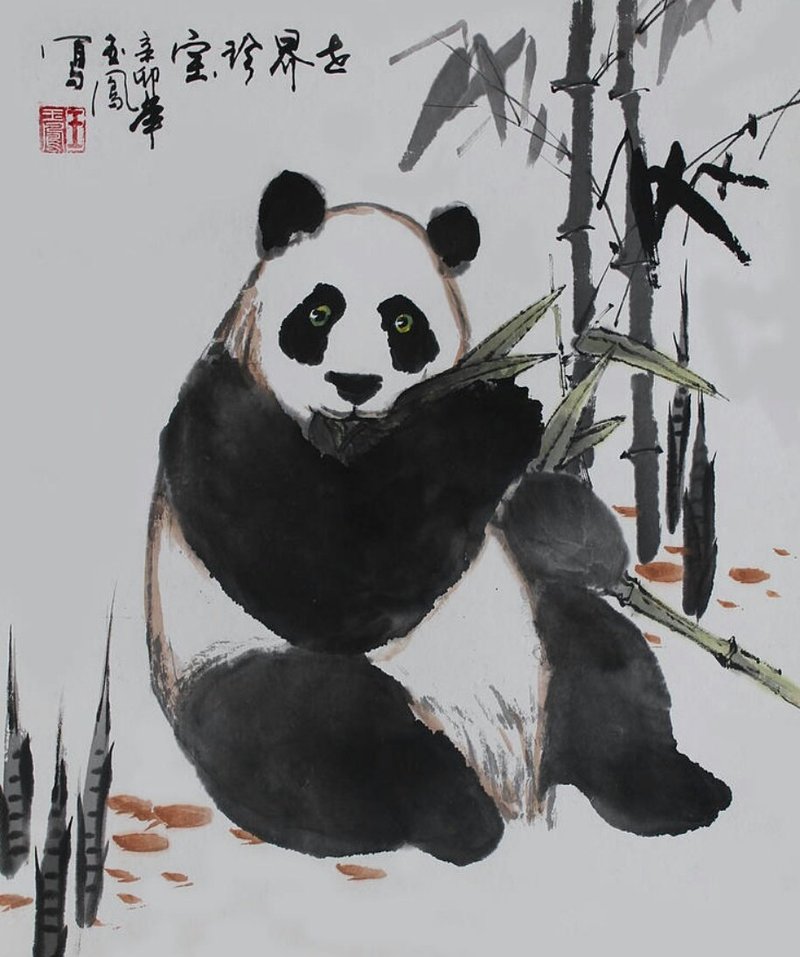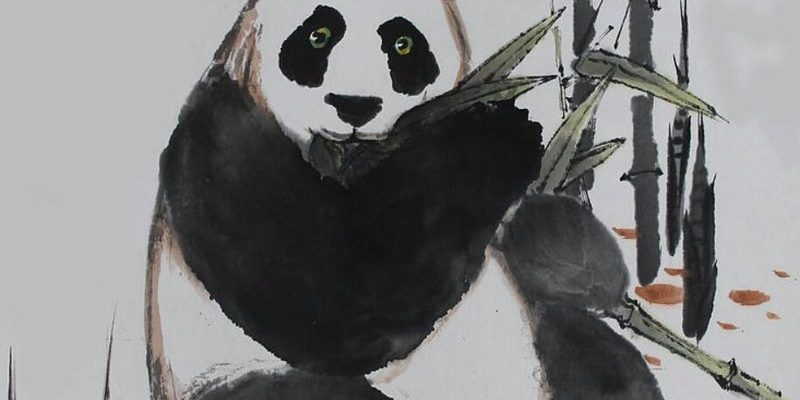
From ancient Chinese tales to modern pop culture references, the panda has woven itself into the fabric of many societies. While we often see pandas in zoos or conservation centers, their representation in culture tells us so much more about human values, beliefs, and relationships with nature. So, let’s dive into some fascinating ways the panda is celebrated in different cultures and the folklore that surrounds it.
The Panda in Chinese Culture
China is undoubtedly the heart of panda culture. The giant panda has been a beloved symbol for centuries, not just for its cuteness but also for its deep cultural significance. In Chinese mythology, pandas are often associated with peace and harmony. In fact, there’s a famous legend where the panda emerged after a celestial battle, and its appearance is said to promote balance and tranquility among people.
The panda’s black and white coloring is also symbolic. It represents the duality of life—yin and yang. This concept is crucial in Chinese philosophy, portraying how opposing forces can coexist. You might be wondering how this idea translates into everyday life. Well, the panda serves as a reminder that balance is essential, whether in nature or in human interactions.
In modern times, pandas have become *symbols of conservation* as well. The World Wildlife Fund (WWF) uses the panda as its logo, highlighting the need to protect endangered species and their habitats. So, when you see a panda, it’s not just a cute animal; it’s also a powerful reminder of our responsibility towards nature.
Pandas in Folktales and Legends
Throughout history, pandas have featured prominently in various folktales. One popular tale tells of a brave young girl who saved a panda from a hunter. In gratitude, the panda helped her find her way home by guiding her through the forest. This story emphasizes themes of friendship, bravery, and the bond between humans and animals.
Another legend involves the panda being a guardian of the forest. According to this tale, pandas would protect the trees and animals, ensuring that the balance of nature was maintained. This portrayal emphasizes the importance of environmental stewardship and respecting wildlife, reflecting the deep connection many cultures have with nature.
These folktales are more than just stories; they often carry lessons about respecting animals and nature. They teach us that we share our world with all living creatures and have a responsibility to protect them.
The Panda as a Symbol of Peace
Pandas have also become universal symbols of peace. Their gentle nature, coupled with their endearing appearance, lends them to being seen as peaceful creatures. In a world filled with chaos, the panda stands out as a figure of serenity.
This symbolism is especially prominent in international relations. For example, “panda diplomacy” is a term used to describe how China has loaned pandas to various countries as a gesture of goodwill. These loans are often seen as a way of fostering friendly relations and promoting peace. When countries receive a panda, it’s like receiving a goodwill ambassador.
Imagine a nation receiving a panda; it’s not just an animal, but a bridge between cultures. This dynamic adds another layer to how we understand the panda’s role in fostering cooperation and friendship among nations.
Pandas in Modern Popular Culture
Beyond traditional culture and folklore, pandas have made their mark on modern popular culture. Think about movies like “Kung Fu Panda,” which not only features a lovable panda as the main character but also teaches valuable lessons about self-discovery and perseverance. The character Po embodies the struggle of being true to oneself, making it relatable to audiences of all ages.
You might also notice pandas showing up in various merchandising—stuffed toys, clothing, and even video games. This widespread representation highlights how pandas have become icons of not just cuteness, but also resilience and determination.
In this way, the panda transcends its role as merely an animal; it becomes a cultural icon that resonates with people worldwide. Whether through a film, a toy, or even a social media meme, pandas remind us of joy and lightheartedness, uniting people through laughter and smiles.
Pandas and Environmental Conservation
The panda’s representation in culture isn’t just limited to folklore or diplomacy; it’s deeply tied to environmental conservation. As one of the most endangered species, pandas are often at the forefront of wildlife conservation efforts. Their plight has raised awareness about habitat destruction and the importance of biodiversity.
Organizations like the WWF have focused on panda conservation, but the message extends beyond just saving one species. When we rally around the panda, we’re also advocating for all endangered species and the health of our planet.
It’s incredible how culture has intertwined with conservation efforts. By valuing pandas, we’re reminded of our shared responsibility to protect the environment. The panda has become a symbol of hope, reminding us that with effort and commitment, we can make a difference for the planet.
The Artistic Representation of Pandas
Artists have long been inspired by pandas, creating various forms of art that celebrate their beauty and tranquility. Whether it’s paintings, sculptures, or digital art, the panda is often depicted in ways that emphasize its gentle nature.
For example, traditional Chinese art frequently features pandas amidst lush landscapes, symbolizing harmony within nature. This artistic choice showcases not just the panda itself but the environment it thrives in. Artists use these representations to evoke feelings of peace and balance, key tenets of Chinese philosophy.
Moreover, modern street art has also seen a rise in panda imagery. Murals and graffiti often depict pandas in playful or surreal ways, resonating with younger audiences and sparking conversations about wildlife conservation in urban areas.
Through art, pandas become representations of broader ideas and feelings, connecting people across cultures and generations, fostering awareness, and inspiring change.
The Panda’s Influence on Global Culture
The impact of pandas extends far beyond their native habitats. They have become a global phenomenon, representing more than just wildlife; they embody the collective consciousness around conservation and peace. Countries around the world celebrate World Panda Day, recognizing the importance of protecting this beloved species.
In Japan, for example, pandas are celebrated in festivals and art, reflecting the deep admiration for these creatures. In Western cultures, they often symbolize innocence and playfulness. This widespread affection showcases how the panda fosters cultural ties that transcend borders.
The panda’s journey from the bamboo forests of China to the hearts of people globally highlights how cultural symbols travel and evolve. It reminds us of our shared heritage and the universal values of kindness and compassion for all living beings.
In conclusion, pandas are far more than just cute animals; they hold profound significance in various cultures and folklore. From being symbols of peace and conservation to inspiring art and stories, pandas connect us to larger themes of environmental awareness and empathy. As we continue to celebrate and protect these gentle giants, we also embrace the lessons they teach about our relationship with the natural world. So next time you see a panda, think about the rich tapestry of meaning behind this beloved creature.

